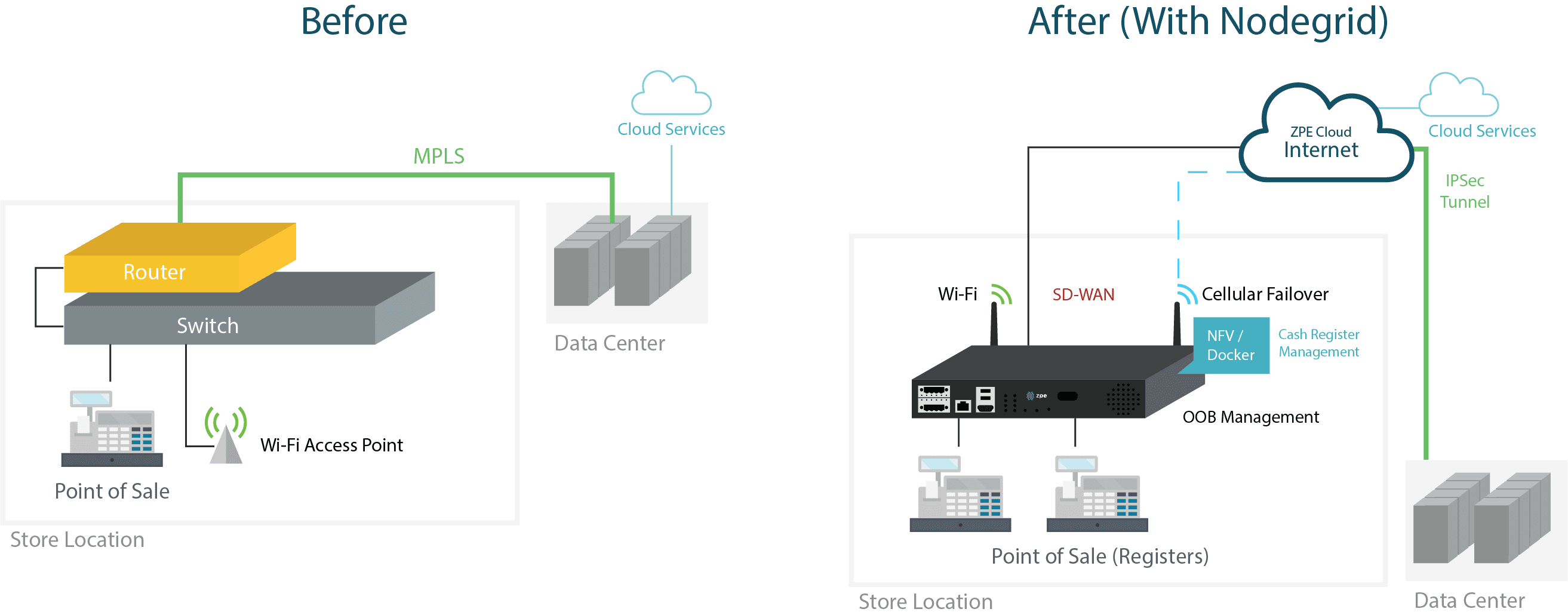When it comes to infrastructure, network consolidation is becoming a must-have. This is especially true in hyper converged architectures, where streamlining operations means the difference between profitability and major losses. Combining systems and reducing the number of disparate solutions helps you achieve an efficient network that supports your business goals — whether it means speeding up the customer experience, decreasing points of failure, saving on support costs, or anything in between.
With legacy infrastructure configurations, you’re forced to deploy purpose-built appliances that add complexity. This complexity is reflected not only by your physical topology, but also by your management practices, system integrations, and end-user experiences. No matter what industry you’re in, you can unwind your tangled enterprise network and reap many benefits using a consolidated solution.
In this entry, you’ll explore network consolidation and why a global retailer could no longer do business without the advantages it offers.
Network consolidation means simpler networking
If you draw a layout of your hardware configurations, your legacy setups most likely resemble intricate webs. Network traffic must travel along many paths and stop at each hardware node for processing. Heavy user loads can easily bog down your system, especially because your legacy devices don’t come with processors built for performance.
But when you consolidate, you can implement multi-function devices and replace many disparate appliances. Instead of having a complicated stack comprised of switches, routers, firewall boxes, modems, and other devices, you can get a powerful solution that combines all these into one.
Consolidating can also involve taking advantage of virtualization to simplify your infrastructure. You can deploy applications, run VMs or Docker containers, use automation tools, and more. You can cut complexity and further reduce your hardware stack by virtualizing your environments.
For management purposes, you can also consolidate your efforts using software that unifies your different solutions. This involves deploying tools to centralize your control, so you don’t have to juggle unique management UIs and vendor-specific software.

Network consolidation comes with many benefits
When you adopt all-in-one hardware, your deployments become simple, fast, and cost effective. You save on capital expenses and shipping costs, and you don’t have to configure and provision an array of separate devices. If you also use zero touch provisioning, deployments become plug ’n play simple. You only need someone to physically install and boot your boxes, and your sites automatically come online in minutes. On top of this, your user experiences become smoother because your network is streamlined with appliances that are more powerful.
Virtualization also speeds up the customer experience thanks to more efficient integrations and service chaining. You can closely integrate solutions to boost efficiency, without being held back and forced to make changes at the hardware level. You can provide an experience that’s responsive, even during increased traffic flows and heavy workloads.
If you consolidate management with a unified software tool, your IT teams can do away with cumbersome administration protocols and practices. They no longer need to be dispatched to perform on-site maintenance or perform lengthy troubleshooting to find problems. A centralized management suite helps pinpoint issues and offers remote control for instant response times. Use it in conjunction with all-in-one hardware, and you don’t need to waste time connecting to check on non-problematic devices. You know exactly where to focus your efforts, while your software tool gives you unified control of all your integrated solutions — from SD-WAN, to routing, switching, security, and more.
How does a large retailer benefit from network consolidation?
When a global retailer’s costs began to skyrocket, their network was to blame. They knew that in order to maintain profitability, they needed to move away from their legacy infrastructure configuration. This consisted of MPLS lines at each branch location, with separate devices for switching, routing, and security.
Their customer experience was unresponsive, and came with long transaction times and even longer checkout lines. Disruptions exacerbated everyday operations, forcing technicians to be dispatched to set up LTE modems while MPLS connections were restored.
Their network was costing too much money to maintain, and their poor customer experience led to too much lost revenue.
But a single Nodegrid solution allowed them to achieve network consolidation and leave behind all of these problems. They streamlined their hardware stack at each location, and allowed IT teams to support their networks with extreme efficiency.
